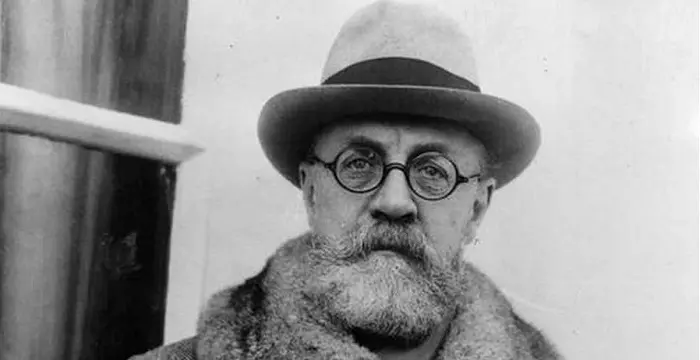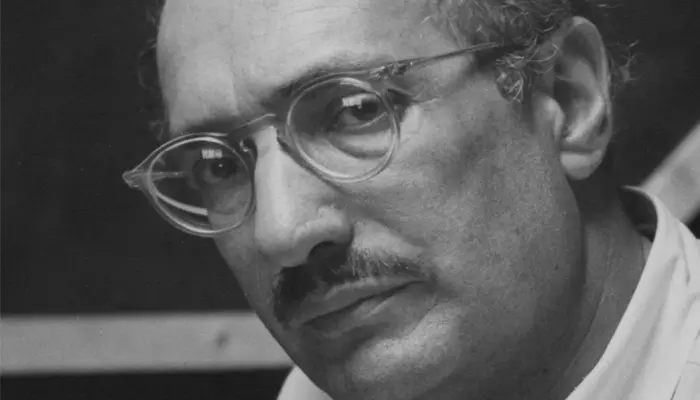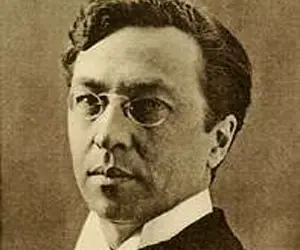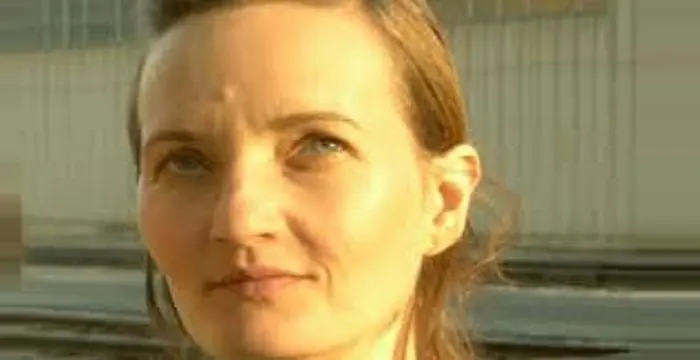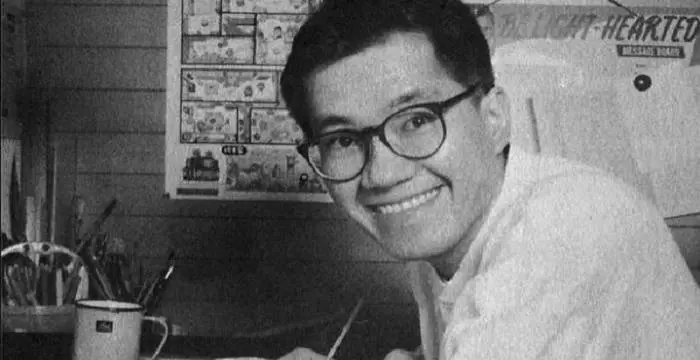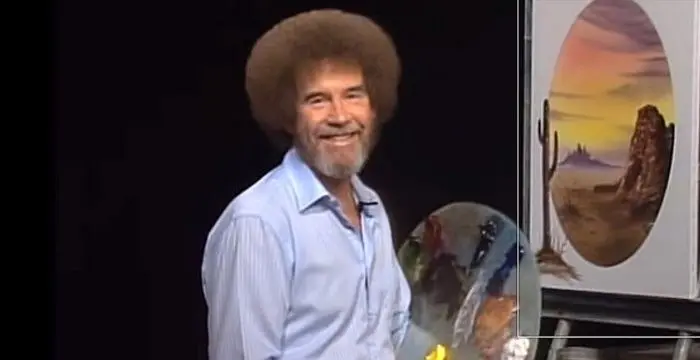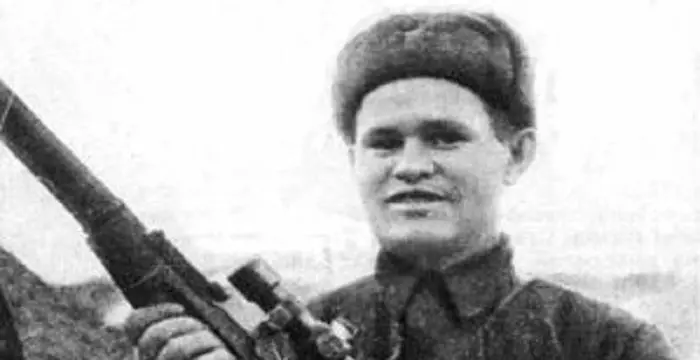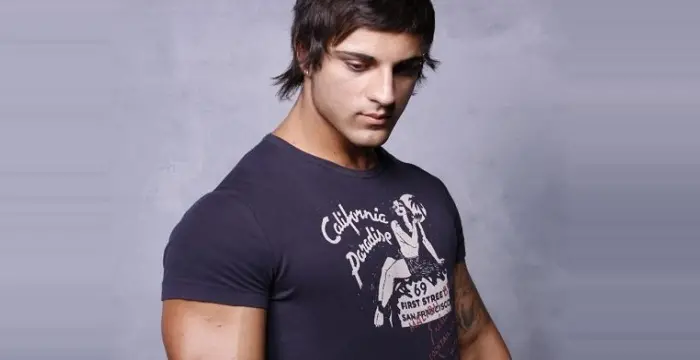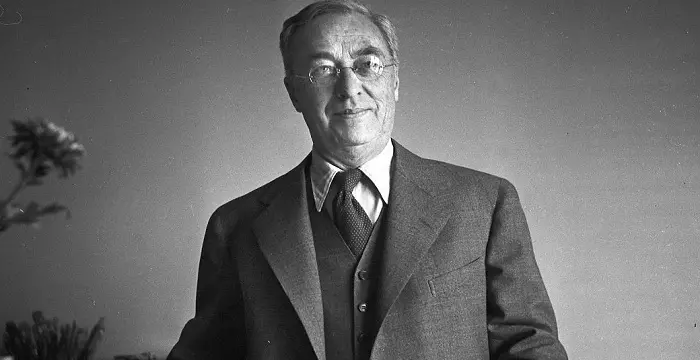
Wassily Kandinsky - Artists & Painters, Facts and Childhood
Wassily Kandinsky's Personal Details
Wassily Kandinsky was a Russian painter, popularly recalled in the art world as the Father of Abstract Art
| Information | Detail |
|---|---|
| Birthday | December 16, 1866 |
| Died on | December 13, 1944 |
| Nationality | Russian |
| Famous | Artists & Painters, Artists, Abstract Painters |
| Spouses | Anna Chimiakina (m. 1892–1911), Nina Andreievskaya (m. 1917–1944) |
| Known as | Wassily Wassilyevich Kandinsky |
| Childrens | Vsevolod Kandinsky |
| Universities |
|
| Birth Place | Moscow |
| Gender | Male |
| Sun Sign | Sagittarius |
| Born in | Moscow |
| Famous as | Painters |
| Died at Age | 77 |
// Famous Abstract Painters
Micheline Roquebrune
Micheline Roquebrune is a petite Moroccan-French painter best known as the third wife the legendary Scottish actor Sir Sean Connery. Check out this biography to know about her birthday, childhood, family life, achievements and fun facts about her.
Henri Matisse
Henri Matisse was an eminent French artist. This biography profiles his childhood, life, career, works, achievements, trivia and timeline.
Mark Rothko
Marcus Yakovlevich Rothkowitz was a painter of Latvian Jewish descent living in the United States of America. If you would like to learn more about his profile, childhood, career and timeline, read on
Wassily Kandinsky's photo
Who is Wassily Kandinsky?
Popularly known as the Father of Abstract Art, Wassily Kandinsky was an influential Russian painter and theorist. He was a leader in avant-garde art who resolved to expand the boundaries of art to a level unheard of in those days. One of the founders of the pure abstraction in paintings of the early 20th century, he gave up on law and economics to pursue his passion for art and no sooner created waves in the industry with his artistic passion and innovative sense. Interestingly, Kandinsky started a revolution in abstract art, which only evolved, matured and developed over a period of time, getting intense based on novel artistic experiences by painters and thinkers of the coming generations. What differentiated him from painters of his generation was his use of colors and its relation with music. While others used colors to provide just a description of nature or subject matter, he employed his palette of colors to express emotions and feelings. Though his works created controversies among his contemporaries and critics, he nevertheless carved a niche for himself in the world of art. He worked tirelessly creating abstract art that was rich in essence and worked with form and color to come out with the desired effect. While most of his paintings were lost in the Nazi raid and World War II, some of his artwork done in Germany continues to exist, eulogizing his artistic sensibilities and standing as the forerunner and pioneer of the modern age art.
// Famous Artists & Painters
Micheline Roquebrune
Micheline Roquebrune is a petite Moroccan-French painter best known as the third wife the legendary Scottish actor Sir Sean Connery. Check out this biography to know about her birthday, childhood, family life, achievements and fun facts about her.
Yvonne McGuinness
Yvonne McGuinness is an Irish multimedia artist. This biography profiles her childhood, family, personal life, career, etc.
Akira Toriyama
Akira Toriyama is a Japanese manga artist. This biography profiles his childhood, family, personal life, achievements, etc.
Childhood & Early Life
Wassily Kandinsky was born on December 16, 1866 to Lidia Ticheeva and Vasily Silvestrovich Kandinsky in Moscow. His father was employed as a tea merchant.
At the age of five, he faced family crises as his parents separated. He moved to Odessa to live with his aunt. He attained his formal education from a grammar school.
It was during the initial years that he learned the art of playing the piano and cello. He even studied drawing as a coach. These early experiences of color and music played a pivotal role in his life and infused in him the belief that each color had a mysterious life of its own.
Completing his preliminary education, he enrolled himself at the University of Moscow in 1886 to study law. He graduated from the university with an honors degree.
Career
In 1889, he travelled to Vologda province to study their traditional criminal jurisprudence and religion. His experience at the Vologda along with his study of folk art inspired much of his former works.
In 1892, he took up the position at the Moscow Faculty of Law. However, the same did not continue for long as two events changed the course of his life forever – watching an exhibition of French Impressionists in Moscow and hearing Wagner's Lohengrin at the Bolshoi Theatre.
In 1896, he gave up on law and travelled to Munich to make a career out of art. He enrolled at the Munich Academy of Arts. However, much of what he learned was self-directed.
At the beginning of the 19th century, he emerged as a theorist and a painter. Though his earlier works were based on conventional themes and art forms, much of his later work portrayed intense relationship between music and color.
Unlike other painters of the era, his usage of colors on the canvas was extremely different. His palette of colors was used to express emotion rather than provide just a description of nature or subject matter.
From 1906 to 1908, he travelled to Europe engaging himself in paintings and exploring various exhibitions. It was during this time that he came out with his famous work, ‘The Blue Mountain’ which explicitly described a scenic view of nature through colors.
His early paintings did not feature the presence of any human figure. Most of them were colourful representations of scenic views excepting for ‘Sunday Old Russia’ which demonstrates colourful representation of peasants and nobles
In 1909, he founded the Munich New Artist’s Association and served as its president. However, his radical thoughts did not go down well with the other conventional artists and led to the disbanding of the group in 1911.
The dissolution of Munich New Artist’s Association led to the formation of a new group, the Blue Rider, this time with like-minded artists. The group hosted two exhibits and even released a yearly calendar. However, with the outbreak of World War I, he moved back to Russia.
Meanwhile, he released the treatise, ‘On the Spiritual in Art’ in the Blue Rider Calendar in which he promoted abstract art and the autonomous use of colors rather than them being employed to provide visual description of objects and other forms.
Upon returning to Russia, he was engrossed in the cultural politics of Russia and collaborated with art education and museum reform from 1918 until 1921. Indulging less on canvas, he devoted much of his time imparting artistic knowledge through a program based on form and colour analysis
He founded the Institute of Artistic Culture in Moscow. However, not long before, his radical ideas and expressionistic view of art was rejected by the radical members of the Institute as too distinctive and conventional.
In 1921, architect Walter Gropius, founder of the Bauhaus of Weimar, invited him to visit Germany which he duly did. The following year, he conducted painting classes for beginners as well as trained professionals, teaching them his color theory with new elements of form psychology.
In 1926, he published his second theoretical book, ‘Point and Line to Plane’ which gave a detailed account of his development of forms study. The work paid emphasis on geometrical forms, such as triangle, circle, half-circle, straight line, curves and planes.
His works underwent yet another series of change in the following years as he further experimented with color. The works of this era highlighted individual geometric elements which paved way to cold colors.
‘Composition VIII’ released in 1923 is one of the foremost works of the Weimar period. Two years later, he released yet another significant work, ’Yellow-Red-Blue’ wherein he described a stage of ‘cold romanticism’.
He left for Berlin in 1932 following a Nazi smear campaign. He stayed there until July 1933 after which he moved to Paris. In Paris, he stayed in a small apartment creating his work in a living room studio. Most of his works of this time used original colour compositions, occasionally mixing sand with paint to give rustic granular texture.
Between 1936 and 1939, he painted two last major compositions - ‘Composition IX’ and ‘Composition X’. While the former has an impression of an embryo in the womb with highly powerful and contrasted diagonals, the latter employs small squares of colours and coloured bands.
In July 1937, he along with other artists was featured in the ‘Degenerate Art Exhibition’ in Munich. Though the exhibition was widely attended, 57 of his works were confiscated by the Nazis.
Personal Life & Legacy
He first tied the knot with his cousin Anna Chimyakina in 1892. However, the alliance did not work out for long and in 1903, he divorced her. During this time, he was romantically involved with Gabriela Munter.
He first met Nina Andreevskaya, daughter of Russian General in 1916. The two went into the wedlock the following year in the month of February.
He breathed his last following a cerebrovascular disease in Neuilly-sur-Seine, France on December 13, 1944.
Trivia
He is the founder of pure abstraction and often known as the Father of Abstract Art in the world of art.
// Famous Artists
Susan Mikula
Susan Mikula is an American artist and photographer. Check out this biography to know about her childhood, family life, achievements and fun factsabout her life.
Akira Toriyama
Akira Toriyama is a Japanese manga artist. This biography profiles his childhood, family, personal life, achievements, etc.
Bob Ross
Bob Ross was a celebrated, creative American painter and an art instructor. Check out this biography to know about his birthday, childhood, family life, achievements and fun facts about him.
Wassily Kandinsky biography timelines
- // 16th Dec 1866Wassily Kandinsky was born on December 16, 1866 to Lidia Ticheeva and Vasily Silvestrovich Kandinsky in Moscow. His father was employed as a tea merchant.
- // 1886Completing his preliminary education, he enrolled himself at the University of Moscow in 1886 to study law. He graduated from the university with an honors degree.
- // 1889In 1889, he travelled to Vologda province to study their traditional criminal jurisprudence and religion. His experience at the Vologda along with his study of folk art inspired much of his former works.
- // 1892In 1892, he took up the position at the Moscow Faculty of Law. However, the same did not continue for long as two events changed the course of his life forever – watching an exhibition of French Impressionists in Moscow and hearing Wagner's Lohengrin at the Bolshoi Theatre.
- // 1892 To 1903He first tied the knot with his cousin Anna Chimyakina in 1892. However, the alliance did not work out for long and in 1903, he divorced her. During this time, he was romantically involved with Gabriela Munter.
- // 1896In 1896, he gave up on law and travelled to Munich to make a career out of art. He enrolled at the Munich Academy of Arts. However, much of what he learned was self-directed.
- // 1906 To 1908From 1906 to 1908, he travelled to Europe engaging himself in paintings and exploring various exhibitions. It was during this time that he came out with his famous work, ‘The Blue Mountain’ which explicitly described a scenic view of nature through colors.
- // 1909 To 1911In 1909, he founded the Munich New Artist’s Association and served as its president. However, his radical thoughts did not go down well with the other conventional artists and led to the disbanding of the group in 1911.
- // 1916He first met Nina Andreevskaya, daughter of Russian General in 1916. The two went into the wedlock the following year in the month of February.
- // 1918 To 1921Upon returning to Russia, he was engrossed in the cultural politics of Russia and collaborated with art education and museum reform from 1918 until 1921. Indulging less on canvas, he devoted much of his time imparting artistic knowledge through a program based on form and colour analysis
- // 1921In 1921, architect Walter Gropius, founder of the Bauhaus of Weimar, invited him to visit Germany which he duly did. The following year, he conducted painting classes for beginners as well as trained professionals, teaching them his color theory with new elements of form psychology.
- // 1923‘Composition VIII’ released in 1923 is one of the foremost works of the Weimar period. Two years later, he released yet another significant work, ’Yellow-Red-Blue’ wherein he described a stage of ‘cold romanticism’.
- // 1926In 1926, he published his second theoretical book, ‘Point and Line to Plane’ which gave a detailed account of his development of forms study. The work paid emphasis on geometrical forms, such as triangle, circle, half-circle, straight line, curves and planes.
- // 1932 To Jul 1933He left for Berlin in 1932 following a Nazi smear campaign. He stayed there until July 1933 after which he moved to Paris. In Paris, he stayed in a small apartment creating his work in a living room studio. Most of his works of this time used original colour compositions, occasionally mixing sand with paint to give rustic granular texture.
- // 1936 To 1939Between 1936 and 1939, he painted two last major compositions - ‘Composition IX’ and ‘Composition X’. While the former has an impression of an embryo in the womb with highly powerful and contrasted diagonals, the latter employs small squares of colours and coloured bands.
- // Jul 1937In July 1937, he along with other artists was featured in the ‘Degenerate Art Exhibition’ in Munich. Though the exhibition was widely attended, 57 of his works were confiscated by the Nazis.
- // 13th Dec 1944He breathed his last following a cerebrovascular disease in Neuilly-sur-Seine, France on December 13, 1944.
// Famous Russian peoples
Vasily Zaytsev
Vasily Zatysev was a Russian sniper who served during the World War II. Check out this biography to know about his childhood, family life, achievements and fun facts about him.
Zyzz (Aziz Shavershian)
Zyzz (Aziz Shavershian) was a popular Australian Body Builder and internet personality. Check out this biography to know about his childhood, family life, achievements and other facts about his life.
Kristina Pimenova
Read this bio to gather several facts, trivia and many details related to the personal and family life of Kristina Pimenova.
Nikolai Valuev
Nikolai Valuev is a Russian retired professional boxer, actor, politician, and author. Check out this biography to know about his childhood, family life, achievements and fun facts about him.
Olesya Rulin
Olesya Rulin is a Russian-American actress, best known for her role in Disney's commercially successful ‘High School Musical’ franchise. Check out this biography to know about her childhood, family life, achievements and fun facts about her life.
Vitaly Zdorovetskiy
Check out all that you wanted to know about Vitaly Zdorovetskiy, the budding YouTube Personality; his birthday, family and personal life, his girlfriends, fun trivia facts and more.
Wassily Kandinsky's FAQ
What is Wassily Kandinsky birthday?
Wassily Kandinsky was born at 1866-12-16
When was Wassily Kandinsky died?
Wassily Kandinsky was died at 1944-12-13
Where was Wassily Kandinsky died?
Wassily Kandinsky was died in Neuilly-sur-Seine
Which age was Wassily Kandinsky died?
Wassily Kandinsky was died at age 77
Where is Wassily Kandinsky's birth place?
Wassily Kandinsky was born in Moscow
What is Wassily Kandinsky nationalities?
Wassily Kandinsky's nationalities is Russian
Who is Wassily Kandinsky spouses?
Wassily Kandinsky's spouses is Anna Chimiakina (m. 1892–1911), Nina Andreievskaya (m. 1917–1944)
Who is Wassily Kandinsky childrens?
Wassily Kandinsky's childrens is Vsevolod Kandinsky
What was Wassily Kandinsky universities?
Wassily Kandinsky studied at Anton Ažbe's private school Academy of Fine Arts, University of Moscow
What is Wassily Kandinsky's sun sign?
Wassily Kandinsky is Sagittarius
How famous is Wassily Kandinsky?
Wassily Kandinsky is famouse as Painters

